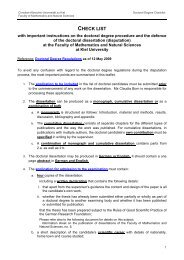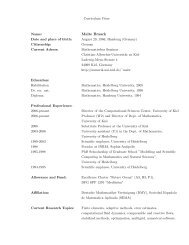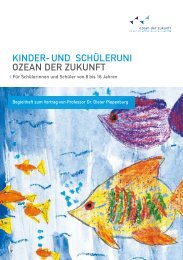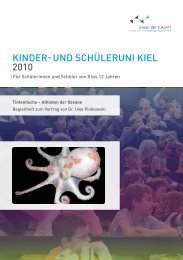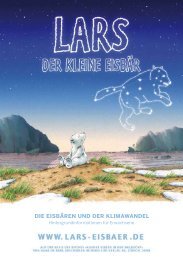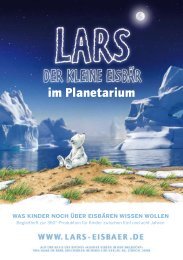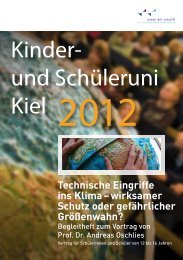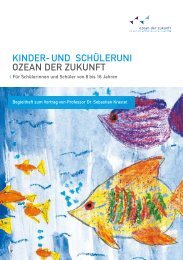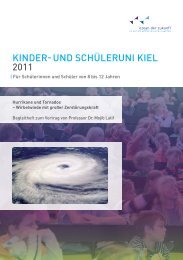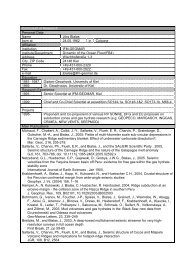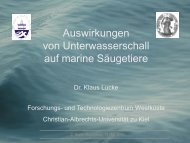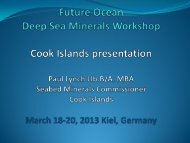Untitled - The Future Ocean
Untitled - The Future Ocean
Untitled - The Future Ocean
- No tags were found...
Create successful ePaper yourself
Turn your PDF publications into a flip-book with our unique Google optimized e-Paper software.
2. State-of-the-art<strong>The</strong> variety of numerical simulation within the Cluster ranges from the modeling of oceancirculation interactions with climate and the carbonate system (A3, A4), the formation of mineraldeposits (B3), the molecular physics of chemical reactions (A5, A6) to the simulation ofecosystems and economics (B1). Continuing effort in modeling has led to highly complexformulations which require efficient and reliable numerical treatment and modern datamanagement. Substantial progress in computational fluid dynamics, multi-scale modeling,optimization, etc. has been achieved through interdisciplinary research. Partial differentialequations describe the transient evolution of various physical systems, e.g. fluid flow, and can besolved up to a reasonable resolution using adaptive and stabilized discretizations. Extremely largesystems of equations are tackled by efficient numerical tools, which scale linearly with the problemsizes. All computations of geophysical phenomena must cope with inherent uncertainties in modelparameters. Stochastic methods can, in principle, assess the errors involved, and recentdevelopments permit the computation of expected responses and the quantification ofuncertainties.Schematic structure of the platform3. Existing and Emerging Technologies<strong>The</strong> purpose of this platform is to develop and support various forms of numerical simulation anddata processing activities within the Cluster. An effective support for these activities will be built onan integration of the distinct expertise of various groups, thereby creating a platform combininginnovative methods in applied mathematics and software technologies. Excellent computingresources at CAU, which comprise both a NEC-SX8 vector processor architecture and a massivelyparallel architecture (SGI-ALTIX) in shared funding with IFM-GEOMAR, permit large-scalecomputations. <strong>Ocean</strong> climate model development has a long history in Kiel, witnessed by theleading role of proponents in major international panels. <strong>The</strong> groups have contributed extensivelyto the modeling activities of major EU programs, the German climate research programs DEKLIMand CLIVARmarine, and to SFB 460. Current activities, embedded in an international network ofcollaboration, are centered around the development of a new model hierarchy (KCMS), involving aflexible coupling of various state-of-the-art ocean circulation, biogeochemistry, and atmosphere94



